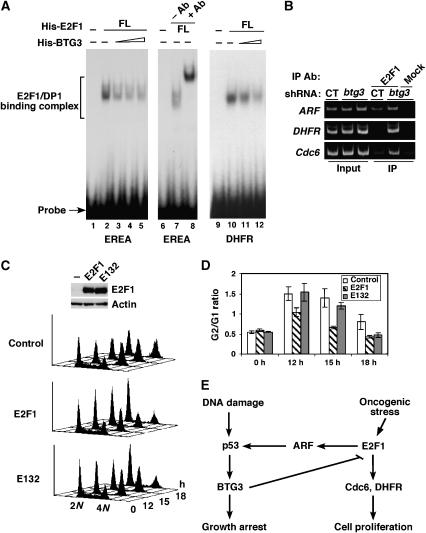Figure 8.
BTG3 regulates the G2/M DNA damage checkpoint by blocking the DNA binding activity of E2F1. (A) BTG3 disrupts the sequence-specific DNA binding activity of E2F1 in vitro. EMSA was performed with purified His-E2F1, His-DP1 (50 ng each) and 32P-labeled E2F1 binding sequence derived either from the ARF promoter (EREA, lanes 1–8) or the DHFR promoter (lanes 9–12). Increasing amounts of purified His-BTG3 (40, 80 and 160 ng, respectively) were added as indicated. E2F1 antibody was added in lane 8 to show the binding specificity. (B) BTG3 knockdown promotes binding of E2F1 to the endogenous ARF, DHFR and Cdc6 promoters. HCT116 cells were transfected with plasmids expressing BTG3-targeting shRNA, and binding of E2F1 to its target promoters was assessed by ChIP using anti-E2F1 antibody (lanes 4 and 5) or an unrelated antibody (lane 6) as negative control. CT, control vector. (C) HCT116 cells overexpressing E2F1 but not the DNA-binding-defective mutant E132 are impaired in G2/M arrest after IR. The G2/G1 ratios from three independent experiments are averaged and shown in (D). (E) Model depicting the relationship between p53, BTG3, E2F1 and its targets as described herein (see Discussion).

